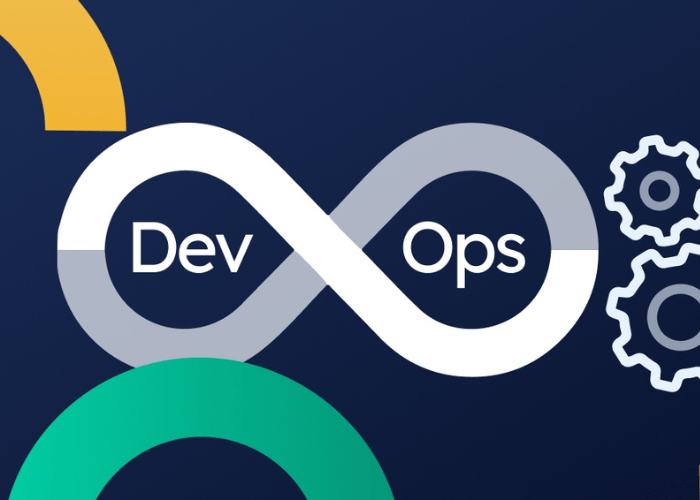Corporate Training:
Embrace Innovation
Build a robust and effective workforce and boost organizational productivity by a long shot. Our corporate training aims at bringing innovation to your operation by enabling your workforce to embrace new technologies and skills in your industry.
Core Concepts
- Reskilling And Upskilling
- Product Knowledge
- Employee Development
- Compliance Training
Leading companies rely on GalaxyCloud for their corporate learning




Why Enterprises Count On us
With a solid reputation and numerous success stories, we’ve established ourselves as a trusted partner in corporate training. Our proven methodologies and consistent results make us a preferred choice for enterprises looking to enhance their workforce capabilities.
Custom Training
We customize our training programs to meet the specific needs and goals of each enterprise, ensuring that the curriculum aligns with the company's objectives and industry requirements.
Expert Instructors
The training sessions are led by seasoned professionals with extensive industry experience. These experts provide practical insights and real-world knowledge, enhancing the learning experience for employees.
Comprehensive Programs
GalaxyCloud offers a wide range of courses covering various fields and emerging technologies. This allows enterprises to upskill their workforce in multiple areas, from technical skills to soft skills.
Flexible Learning
Understanding the diverse needs of modern enterprises, we provide flexible learning options, including online, in-person, and hybrid training models. This flexibility helps accommodate different schedules and learning preferences.
Top Corporate Training Programs
Online Training
Live-instructor Led classes
Self-Paced Learning
Custom training and schedules
One-One Training
on-prem | physical training
Fully Hands-on
Practical-oriented corporate training based on industry implementation of concepts
Solution-Based
Designed to help organizations develop innovative solutions for transformation
Continuous Improvement
Provides a continuous approach to maintaining a vibrant and proactive workforce
Blogs
FAQs
Corporate training provides numerous benefits to organizations, including:
Enhanced Employee Performance: Training equips employees with the necessary skills and knowledge to perform their jobs more effectively, leading to increased productivity and higher-quality work.
Increased Employee Satisfaction and Retention: Offering opportunities for professional development boosts employee morale and job satisfaction, which can reduce turnover rates and retain top talent within the organization.
Improved Adaptability to Change: Regular training helps employees stay updated with industry trends and technological advancements, making the organization more adaptable to market changes and innovation.
Consistency in Processes and Procedures: Training ensures that all employees have a uniform understanding of company policies, procedures, and standards, leading to more consistent and efficient operations.
Enhanced Company Reputation: A commitment to employee development can enhance the organization’s reputation as a desirable place to work, attracting skilled professionals and fostering a positive corporate image.
Corporate training encompasses various components to ensure comprehensive and effective learning. Here are five key components:
Needs Assessment: This initial phase involves identifying the specific skills, knowledge gaps, and training requirements within the organization. By conducting surveys, interviews, and performance evaluations, the company can tailor training programs to address precise needs, ensuring relevancy and effectiveness.
Training Design and Development: Once needs are identified, the training program is designed. This involves creating a structured curriculum, developing training materials, and deciding on the most suitable delivery methods. The design phase ensures that the training is aligned with organizational goals and employee learning styles.
Delivery Methods: Various methods can be used to deliver training, including classroom-based instruction, e-learning modules, on-the-job training, workshops, and seminars. The choice of method depends on the content, audience, and available resources, aiming to engage learners and enhance retention.
Implementation: This is the execution phase where the training is delivered to employees. It includes scheduling sessions, providing necessary resources, and ensuring participants attend and engage with the training materials. Effective implementation requires coordination and support from management to ensure smooth execution.
Evaluation and Feedback: Post-training, it’s crucial to assess the effectiveness of the training program. This involves gathering feedback from participants, measuring improvements in performance, and analyzing whether the training objectives were met. Evaluation helps in refining future training programs and demonstrating the return on investment.
These components together form a comprehensive corporate training strategy, driving continuous improvement and aligning employee development with organizational success.
Measuring the success of corporate training involves a systematic process that evaluates the impact of the training on employee performance and organizational goals. Here’s an outline of this process:
Set Clear Objectives: Before the training begins, define specific, measurable goals that the training is intended to achieve. These could include improvements in job performance, increased productivity, higher employee engagement, or attainment of particular skills.
Pre-Training Assessment: Conduct a baseline assessment to gauge the current level of skills and knowledge of the employees. This can involve tests, surveys, performance reviews, and feedback from supervisors. This initial data provides a reference point for measuring progress post-training.
Monitoring During Training: Collect data during the training sessions to track participation, engagement, and immediate learning outcomes. This can include quizzes, interactive activities, and real-time feedback. Monitoring ensures that the training is on track and allows for adjustments if needed.
Post-Training Evaluation: After the training, assess the participants to measure their learning and skill acquisition. This can involve tests, practical assessments, and simulations that mirror real job scenarios. Compare these results with the pre-training assessments to determine knowledge gains.
Behavioral Changes and Application: Observe and measure how employees apply the new skills and knowledge to their jobs. This can be done through performance reviews, observation, and feedback from managers and peers. The focus here is on behavioral changes and improvements in job performance.
Business Impact: Analyze the broader impact of the training on organizational performance. Key performance indicators (KPIs) such as productivity rates, sales figures, error rates, customer satisfaction scores, and employee retention rates can provide insights into how the training has influenced overall business outcomes.
Feedback Collection: Gather feedback from participants regarding the training program’s content, delivery, and relevance. Surveys, interviews, and focus groups can provide valuable insights into the participants’ perspectives and help identify areas for improvement.
Return on Investment (ROI) Analysis: Calculate the ROI of the training by comparing the costs of the training program with the financial benefits derived from it. This includes considering increased productivity, reduced error rates, higher sales, and any other quantifiable benefits.
Continuous Improvement: Use the data collected and insights gained from the evaluation process to refine and improve future training programs. Address any gaps identified and make necessary adjustments to ensure that future training initiatives are more effective.
By systematically measuring the success of corporate training through these steps, organizations can ensure that their training programs are aligned with their strategic objectives and deliver tangible benefits.
A corporate training provider or corporate trainer is a specialized professional or organization dedicated to enhancing the skills and knowledge of employees within a business setting. These trainers possess expertise in various domains such as leadership, technical skills, communication, and industry-specific knowledge. They design, develop, and deliver tailored training programs using diverse methods like workshops, seminars, online courses, and hands-on activities. Their role includes assessing training needs, creating relevant content, facilitating learning sessions, and evaluating training effectiveness. By fostering continuous learning and development, corporate trainers play a crucial role in improving employee performance, driving organizational growth, and maintaining a competitive edge in the marketplace.
Choosing a corporate training provider as your training partner is a critical decision that can significantly impact your organization’s performance and growth. Here are some key steps to ensure you select the right provider:
Identify Training Needs: Start by conducting a thorough assessment of your organization’s training needs. Determine the specific skills, knowledge, and competencies that your employees need to develop. Clear understanding of these requirements will help you find a provider with the relevant expertise.
Evaluate Expertise and Experience: Look for providers with extensive experience and expertise in the areas you need training in. Check their track record, client testimonials, case studies, and industry reputation. Ensure they have successfully delivered similar training programs to organizations like yours.
Customization and Flexibility: Choose a provider that offers customized training solutions tailored to your organization’s unique needs. They should be flexible in their approach, able to adapt training content, format, and delivery methods to fit your specific requirements and organizational culture.
Training Methods and Technology: Assess the training methods and technologies the provider uses. Ensure they incorporate a blend of instructional techniques, such as interactive workshops, e-learning modules, simulations, and on-the-job training. Modern, innovative approaches can enhance engagement and effectiveness.
Quality of Trainers: Evaluate the qualifications, experience, and expertise of the trainers themselves. Skilled trainers with practical industry experience can offer valuable insights and real-world applications that enrich the training experience.
Measurable Outcomes: A reputable training provider should have a robust system for measuring training effectiveness. They should offer methods for evaluating learning outcomes, such as assessments, feedback mechanisms, and performance metrics. This ensures that the training has a tangible impact on employee performance.
Support and Follow-up: Ensure the provider offers post-training support and follow-up to reinforce learning and address any challenges employees may face in applying new skills. Continuous support can help maximize the return on investment for the training program.
Cost and Value: Consider the cost of the training in relation to the value it provides. While budget is a crucial factor, the cheapest option may not always be the best. Evaluate the overall value, including the quality of training, potential ROI, and long-term benefits to your organization.
Reputation and References: Research the provider’s reputation in the industry. Seek references from other organizations that have used their services. Positive feedback and strong recommendations from reputable sources can give you confidence in your choice.
Trial or Pilot Program: If possible, arrange for a trial or pilot training session. This allows you to experience the provider’s training style and effectiveness firsthand before making a long-term commitment.
By carefully considering these factors, you can choose a corporate training provider that aligns with your organizational goals, meets your specific needs, and contributes to the overall development and success of your workforce.
GalaxyCloud’s corporate training programs are designed to empower organizations with cutting-edge skills and knowledge essential for success in today’s competitive landscape. Specializing in areas such as cloud computing, cybersecurity, data analytics, and digital transformation, GalaxyCloud offers tailored training solutions that cater to the unique needs of each client. Their expert trainers leverage a blend of interactive workshops, e-learning modules, and hands-on labs to ensure practical, real-world application of skills. GalaxyCloud emphasizes continuous learning and provides comprehensive support, from initial needs assessment to post-training follow-up. With a focus on measurable outcomes, GalaxyCloud helps businesses enhance employee performance, drive innovation, and achieve strategic objectives.
Choosing GalaxyCloud as your corporate training partner involves a comprehensive, step-by-step process to ensure alignment with your organizational goals and effective skill enhancement. Here’s an overview:
Initial Consultation: The process begins with an in-depth consultation where GalaxyCloud’s representatives meet with your key stakeholders to understand your organization’s objectives, current challenges, and specific training needs. This includes discussing the desired outcomes and the skills or knowledge areas that need development.
Needs Assessment: Following the consultation, GalaxyCloud conducts a thorough needs assessment. This may involve surveys, interviews, and analysis of current performance metrics to identify skills gaps and areas for improvement. They assess your organization’s workflow, existing competencies, and future goals to tailor the training program precisely.
Workflow Analysis: GalaxyCloud’s experts delve into your organization’s workflows and processes to identify inefficiencies and opportunities for enhancement. This step ensures that the training program addresses real-world applications and integrates seamlessly with your operational needs.
Customized Training Plan Development: Based on the assessment and analysis, GalaxyCloud designs a customized training plan. This plan outlines the training objectives, content, methods, and timeline. It may include a mix of workshops, e-learning modules, hands-on labs, and practical exercises tailored to your organization’s specific requirements.
Program Implementation: The training program is then rolled out according to the agreed plan. GalaxyCloud’s expert trainers deliver the sessions, ensuring high engagement and practical relevance. They use innovative teaching methods and the latest technology to maximize learning outcomes.
Continuous Monitoring and Support: Throughout the training period, GalaxyCloud provides continuous monitoring and support. They collect feedback from participants, track progress, and make necessary adjustments to ensure the training remains effective and relevant.
Evaluation and Feedback: After the training, GalaxyCloud conducts a comprehensive evaluation to measure its impact. This includes assessing the improvement in skills, changes in job performance, and achievement of the training objectives. They gather feedback from participants and stakeholders to refine future training programs.
Post-Training Follow-up: GalaxyCloud offers post-training follow-up to reinforce learning and ensure sustained improvement. This may include additional resources, refresher courses, and ongoing support to help employees apply their new skills effectively.
By following this structured process, GalaxyCloud ensures that their corporate training programs are tailored to your organization’s specific needs, leading to significant improvements in employee performance and overall business outcomes.







